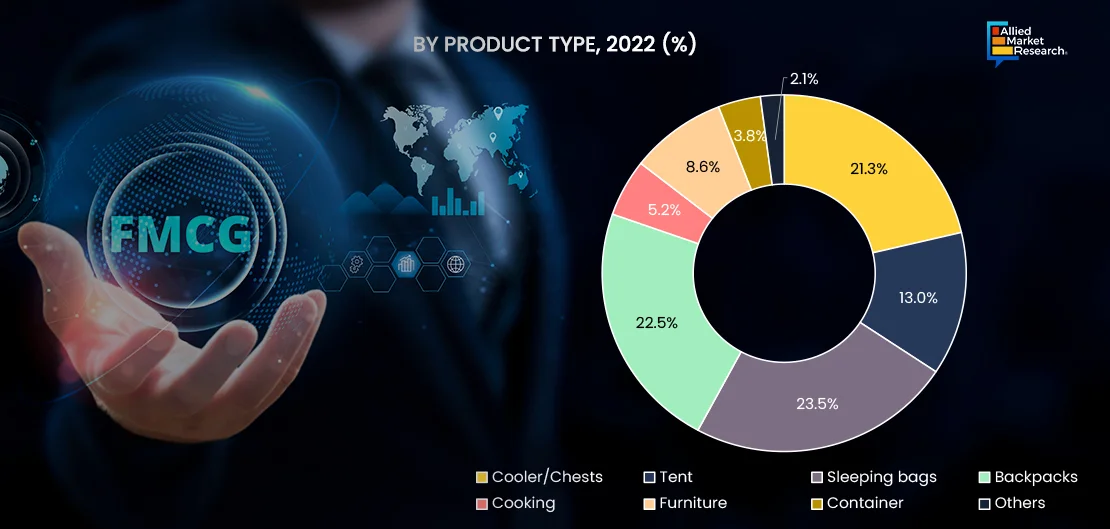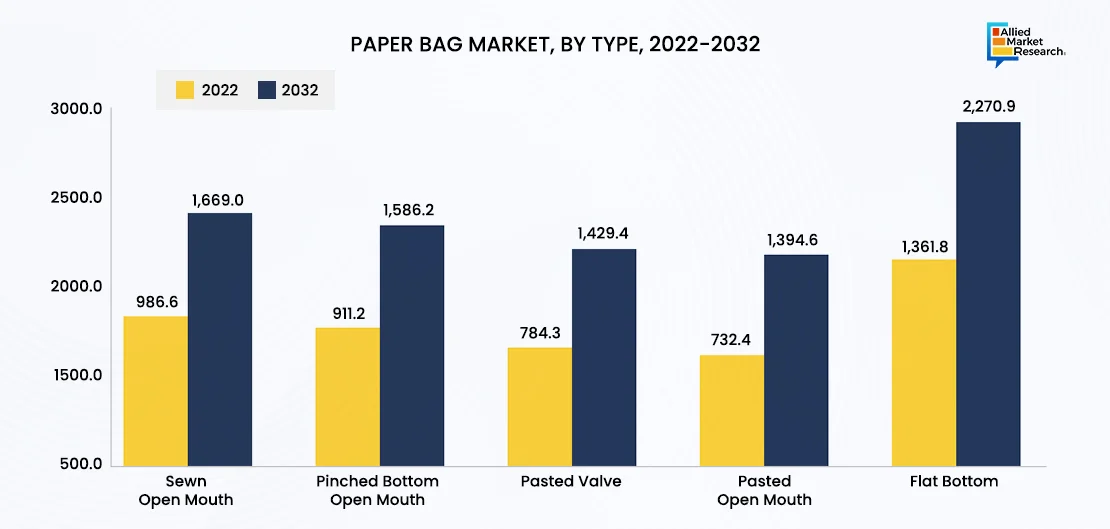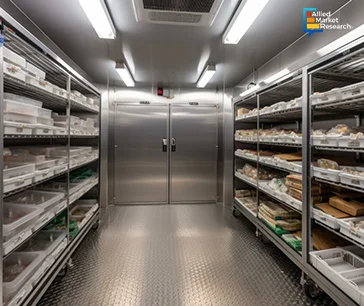Table Of Contents

Roshan Deshmukh

Pooja Parvatkar
Top 5 Emerging Markets in the Consumer Goods Sector in Q1 2024: Allied Market Research’s Comprehensive Analysis

The consumer goods sector is experiencing a paradigm shift fueled by evolving consumer preferences, digital innovation, and sustainability imperatives. Companies are adapting strategies to meet dynamic demands and regulatory requirements, reshaping the landscape of consumer goods and retail. AMR has identified the top 5 emerging markets in the consumer goods sector for the 1st quarter of 2024, showcasing areas of promising growth and investment opportunities.
Utilizing AMR’s proprietary 'Title Matrix Tool', research analysts and parallel teams have prioritized these markets based on predefined parameters. These criteria include relevance, current importance, growth potential, client demand trends, key player significance, market size, and other critical factors.
The reports on these top 5 markets aim to address key business questions such as current size and forecasts, drivers of growth and opportunities, strategies adopted by major players, challenges and potential risks, regional dynamics, and the competitive landscape. Additionally, they incorporate retrospective analysis and historical data to provide a comprehensive understanding of trends and dynamics over time.
Here are the top 5 emerging markets driving innovation, addressing critical consumer demands, and shaping the future of the consumer goods sector.
1. Camping Equipment
The camping equipment market is witnessing significant growth and is expected to hit $51.8 billion by 2032, growing at a CAGR of 8.6% from 2023 to 2032. This growth is mainly due to the increased interest in camping and trekking activities, particularly among millennials and Gen Z populations. The major trend is the shift towards outdoor recreational activities as consumers seek nature-based experiences and adventure. This market is strategically important to research right now as it offers immense growth potential fueled by changing consumer lifestyles and preferences.
The report includes segmental analysis by type, application, and distribution channel. The camping backpacks segment generated the highest share in 2022.

The report provides a comprehensive SWOT analysis, highlighting its strengths, weaknesses, opportunities, and threats. Strengths include rising consumer interest in outdoor activities, driving sales growth, while weaknesses may arise from reduced consumer spending during economic uncertainty. Opportunities stem from the growing popularity of camping and social media trends, while threats include the impact of events like the COVID-19 pandemic on travel and leisure spending. For stakeholders, this analysis offers valuable insights into dynamics, aiding strategic decision-making and risk management.
2. Paper Bag
The paper bag market is experiencing robust growth and is expected to surpass $8.4 billion by 2032, growing at a CAGR of 5.8% from 2023 to 2032. This growth is driven by government regulations against plastic usage, increasing environmental awareness, and rising consumer preference for sustainable packaging solutions. The major trend in this market is the shift towards eco-friendly packaging options as consumers prioritize sustainability in their purchasing decisions. This market is strategically important to research right now as it offers significant opportunities for growth amid the global sustainability movement.

The market includes segmental analysis by product type, by price point, by end user, by distribution channel. By type, the flat bottom segment held the highest share in 2022.
The report highlights the competitive analysis of the paper bag market by demonstrating the strategies adopted by key players such as Mondi Plc, Smurfit Kappa Group Plc, and International Paper Company to strengthen their market position. These industry leaders are focusing on eco-friendly packaging solutions by adopting strategies such as acquisitions, expansions, partnerships, and product innovations. Stakeholders can benefit from these insights by making informed decisions, identifying market opportunities, and strategically positioning themselves to capitalize on emerging trends in the paper bag industry.

3. Photo as a Service
The photo as a service market is witnessing rapid growth and is poised to garner $74.2 billion by 2032, growing at a CAGR of 4.5% from 2023 to 2032. This growth is driven by the rise in demand for commercial and e-commerce photography. The major trend is the increasing need for high-quality images for marketing materials, product listings, and advertising campaigns across various sectors such as retail, fashion, and food. This market is strategically important to research right now as businesses increasingly rely on visual content to engage consumers and drive sales in the digital era.
The report offers Porter's Five Forces analysis of the photo-as-a-service market. The threat of new entrants is relatively low due to barriers like the need for specialized skills and equipment. However, the bargaining power of suppliers, particularly in terms of high-quality equipment and software, is moderate. Meanwhile, the bargaining power of buyers varies, with large businesses having more leverage compared to individual clients. Competition among existing players is intense, driven by factors like service quality, pricing, and reputation. Additionally, the threat of substitutes is low, given the unique and personalized nature of professional photography services, indicating a favorable environment for stakeholders to capitalize on diverse opportunities and competitive strategies.
4. Consumer Robotics
The consumer robotics market is experiencing a surge in adoption driven by the assurance of cost savings and increased efficiency across various sectors. The global market is poised to hit $59.5 billion by 2032, growing at a CAGR of 26.7% from 2023 to 2032. The major trend in this market is the growing investment in automation and robotics technologies as companies seek to streamline operations and enhance productivity. This market is strategically important to research right now as advancements in robotics technology offer immense opportunities for innovation and disruption across industries.
The report offers segmental analysis, highlighting trends and opportunities across various segments. The consumer robotics market is segmented based on type, application, and region. By type, the market is categorized into autonomous and semi-autonomous robots, with the semi-autonomous sub-segment dominating the market in 2022. In terms of application, it is classified into household robots, entertainment robots, educational robots, and others, with household robots leading the share in 2022. Regionally, Europe held the largest share in 2022, with significant growth driven by innovative solutions meeting diverse demands, particularly in smart home devices and automated cleaning systems.

5. Walk-in Refrigerator
The walk-in refrigerator market is witnessing significant growth and is anticipated to garner $20.2 billion by 2032, growing at a CAGR of 6.1% from 2023 to 2032. driven by the increasing industrial need for cold storage areas in sectors such as food storage, transit, and pharmacies. The major trend is the growing demand for walk-in refrigerators to maintain large capacities of items year-round while focusing on stock rotation and ensuring product quality and safety. This market is strategically important to research right now as the need for cold storage solutions continues to rise with the expansion of the food and pharmaceutical industries.
The report provides a comprehensive regional analysis of the walk-in refrigerator market, covering North America, Europe, Asia-Pacific, and LAMEA. Among these regions, North America emerged as the dominant player in 2022. This was attributed to factors such as the region's robust demand for innovative and sustainable walk-in refrigeration solutions, driven by widespread bulk purchasing habits and the storage of large quantities of food inventory, particularly in the United States. These insights are beneficial for stakeholders in understanding regional dynamics and identifying key growth opportunities for walk-in refrigerator solutions globally.

The Bottom Line
Each of these emerging markets in the consumer goods sector presents distinct opportunities and challenges. By staying abreast of market dynamics, emerging trends, and competitive landscapes, stakeholders can make informed decisions, foster innovation, and play a pivotal role in shaping the future of consumer goods globally. Contact Allied Market Research analysts today for detailed insights, comprehensive reports, and strategic guidance tailored to the consumer goods sector. Gain a profound understanding of trends, opportunities, and challenges that will drive the evolution of consumer goods in Q1 2024 and beyond.

